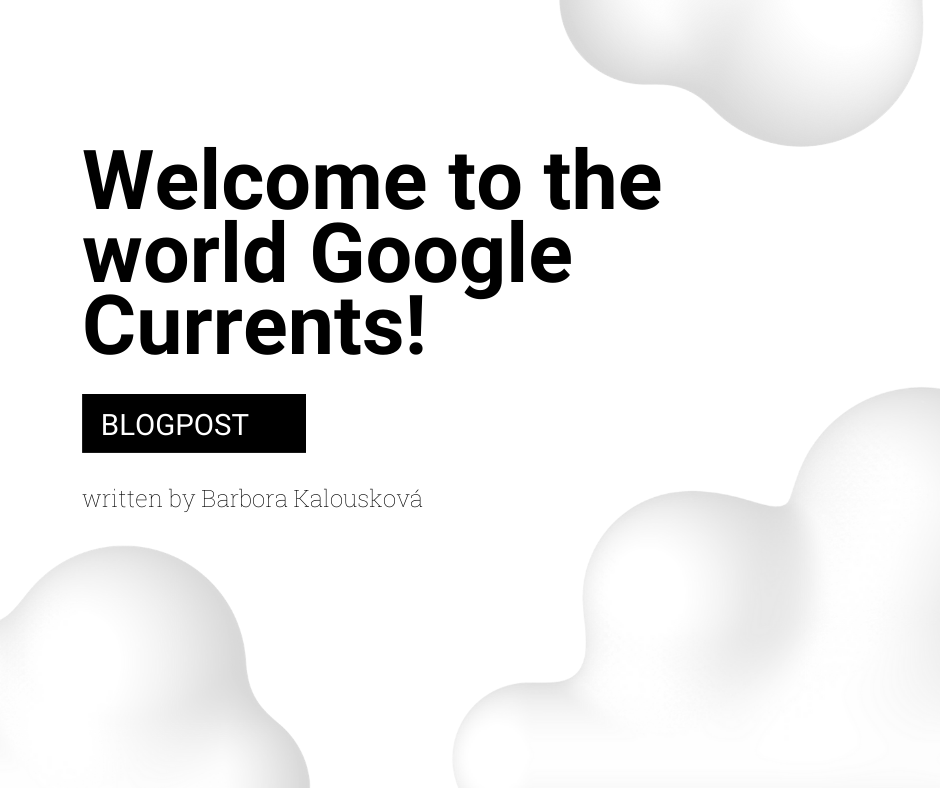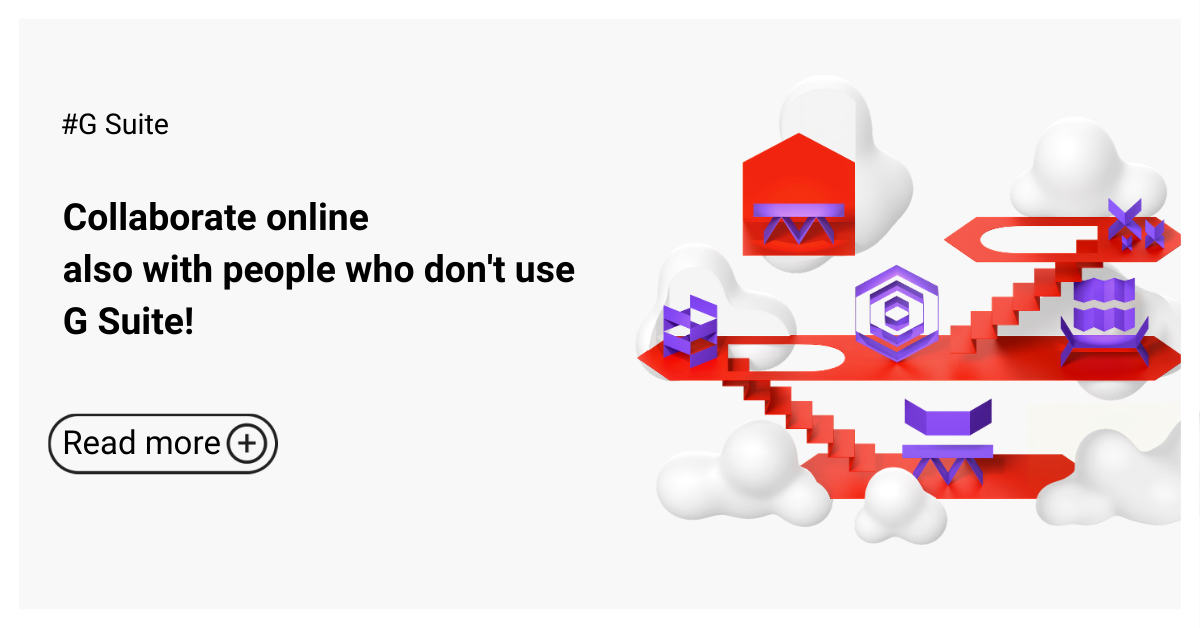Google Workspace
Even better Google Workspace experience with Smart Canvas
The events of the past year and the necessity to move typical office work online put a lot of technologies to the test and proved without a doubt that cloud-based tools are the way to go. Google Workspace was built around the idea of improving human connection in distributed
teams and empowering people to leverage the technology to achieve more and focus on what matters most.
An update just announced at Google I/O 2021 conference, called Smart Canvas is a new tool within Google Workspace that deepens the connection between Docs, Sheets and Slides even further.
Smart Canvas will enhance apps like Docs, Sheets and Slides with new interactive building blocks such as smart chips, templates and checklists that will connect people, content and events into a more seamless experience. It will help people collaborate in context even better, stay connected and focused.
It should be rolling out for Google Workspace users throughout the rest of the year. Let me briefly go through the most important updates announced:
Smart Chips in Docs and Sheets
Google Workspace users are already accustomed to mention other people in comments or Docs by simply typing “@” followed by the person’s name. Google extended this functionality. You will be able to tag (or mention if you wish) also other documents, sheets, slides or even meetings this way. Your teammates will be able to quickly preview the associated content from a web browser or mobile, without the need to open new windows. No more changing tabs and losing the context of your work. Google will be adding this feature to Sheets in the coming months.
Table templates
Some examples presented were:
-
Topic-voting tables that will allow you to easily gather team feedback
-
project-tracking tables will help you capture milestones and statuses of projects on the fly
-
A new document template for capturing meeting notes will automatically import any relevant information from a Calendar meeting invite, including smart chips for attendees and attached files.
Pageless Docs
You will be able to remove the boundaries of a page in Docs in order to create a surface that adjusts itself to the screen that you’re using. This feature will make it easier to work wide tables, large images or detailed feedback in comments.
Smarter and more inclusive writing recommendations
Google writing assistant will now offer more inclusive language recommendations when it makes sense. This could mean, for example, suggesting to use ‘chairperson’ instead of ‘chairman’.It will also warn you about offensive words and language, as well as offer other stylistic suggestions that can speed up editing and help make your writing more impactful.
Connected checklists in Docs
The new feature of checklists in Docs, which could help streamline your team’s workflow by adding actionable tasks you can assign to your colleagues. These action items will show up in Google Tasks, making it easier for everyone to manage a project’s To-Do list. The company said that starting this week in Docs, checklists will be available on the web and on mobile.
Timeline view in Sheets
Here’s another great functionality that will help you streamline your team’s work. The timeline view in Sheets makes tracking tasks easier and faster. It allows you to organise your data by the owner, category, campaign, or whichever attribute best fits. This will help you manage things like marketing campaigns, project milestones, schedules, and cross-team collaborations.
Meet integration in Docs, Sheet, Slide
Apart from the above-mentioned features, the company also announced tighter integration between Google Meet and other tools like Docs, Sheet and Slide. Users can now present their content to a Google Meet call on the web directly from the Doc, Sheet, or Slide. “And in the fall, we’re bringing Meet directly to Docs, Sheets, and Slides on the web, so people can actually see and hear each other while they’re collaborating,” Google wrote in a blog post.
Live captions, translations in Google Meet
Google is also introducing live translations of captions. This feature will be available later this year, starting with English-language live captions translated into Spanish, Portuguese, French, or German.
Collaboration on files directly in Google Chat rooms
Google is bringing more functionalities of instant collaboration with your team within chat rooms so you can jump from a discussion in Google Chat directly to building content together. You can already work in Google Docs and Sheets within the chat and newly this option will also be available for Slides in the coming weeks.
Revolgy offers expert Google Workspace workshops and training to help your team unlock the full potential of Smart Canvas.
Assisted analysis in Sheets
Google is also adding more assisted analysis functionality in Sheets on the web. New formula suggestions will make it easier for everyone, not just analysts, to derive insights from data. This will significantly reduce errors and speed up your data analysis tasks.
Seamless 3rd-party add-ons integration
Google is making it easier for businesses to connect the apps and tools they rely on to Google Workspace. You can already add e-signatures directly in Google Workspace with DocuSign or use the Salesforce connector that integrates with Sheets. To help people work even smarter, they recently announced that AppSheet Automation is generally available so that you can automate time-consuming tasks—like approving invoices and onboarding new hires—without having to write a single line of code.
In the future, the company is planning to build additional APIs so you can bring the information and actions you need from third-party tools directly into smart canvas elements like smart chips, checklists, and table templates.
FAQs
Q1: What is Google Workspace Smart Canvas?
Smart Canvas is a toolset announced at the Google I/O 2021 conference, designed to deepen the integration and connection between Google Docs, Sheets, and Slides.
Q2: What kind of new elements did Smart Canvas introduce to Docs, Sheets, and Slides?
Smart Canvas enhances these applications with interactive building blocks, including smart chips, various templates, and checklists.
Q3: What is the primary aim of the Smart Canvas features?
The goal is to create a more seamless experience by connecting people, content, and events, thereby helping users collaborate more effectively within context, stay connected, and maintain focus.
Q4: When were the Smart Canvas features initially planned for release to Google Workspace users?
The features were expected to roll out throughout the remainder of 2021 following the announcement.
Q5: What are “Smart Chips”, and how was their functionality expanded?
Smart Chips build upon the existing “@” mention feature. Previously used mainly for tagging people, the functionality was extended to allow tagging and previewing associated documents, sheets, slides, or even meetings directly within the document, reducing the need to switch tabs.
Q6: Where were Smart Chips first implemented, and where were they planned to be added next?
Smart Chips were already usable for people in Docs comments and the document body. The expanded functionality (tagging files/meetings) was planned to be added to Sheets in the months following the 2021 announcement.
Q7: Can you give examples of the new Table Templates introduced with Smart Canvas?
Examples included topic-voting tables for feedback gathering, project-tracking tables for capturing milestones and statuses, and a new meeting notes template designed to automatically import relevant information and smart chips from Calendar invites.
Q8: What does the “Pageless Docs” feature allow users to do?
This feature allows you to remove traditional page boundaries in Google Docs, creating a continuous surface that adapts to the screen size being used. This is beneficial for working with wide tables, large images, or detailed comments.
Q9: What improvements were announced for Google’s writing assistance features?
The writing assistant was updated to offer more inclusive language suggestions (e.g., suggesting “chairperson” instead of “chairman”), provide warnings about potentially offensive language, and offer other stylistic suggestions to speed up editing and enhance writing impact.
Q10: What capability did “Connected Checklists” bring to Google Docs?
This feature allows users to create checklists in Docs where items can be assigned as actionable tasks to colleagues. These assigned items then appear in Google Tasks, aiding project management.
Q11: What is the purpose of the “Timeline View” introduced in Google Sheets?
Timeline view is designed to make task tracking easier and faster by enabling users to organize data by various attributes like owner, category, or campaign, which helps in managing projects, milestones, and schedules.
Q12: How was the integration between Google Meet and Docs, Sheets, and Slides enhanced?
Users gained the ability to present their content directly from a Doc, Sheet, or Slide to a Google Meet call. Furthermore, plans were announced to embed Meet directly within Docs, Sheets, and Slides on the web, allowing users to see and hear collaborators while working together in the document.
Q13: What new feature was announced for captions in Google Meet?
Google announced the upcoming introduction of live translations for captions, initially planned for English-language captions being translated into Spanish, Portuguese, French, or German later in 2021.
Q14: How was real-time collaboration improved within Google Chat rooms?
Following the existing ability to collaborate on Docs and Sheets within Chat, the capability to work on Google Slides directly within a chat room was announced to be coming in the weeks after the announcement.
Q15: What enhancement was made to data analysis capabilities in Google Sheets?
Google added more assisted analysis functions, including new formula suggestions designed to make it easier for all users, not just analysts, to derive insights from data, potentially reducing errors and speeding up analysis.
Q16: How did Google address the integration of third-party applications with Google Workspace?
Google aimed to make it easier to connect external tools, citing existing examples like DocuSign and Salesforce integration. They highlighted the general availability of AppSheet Automation for automating tasks without code and announced future plans to build more APIs enabling third-party tools to integrate directly with Smart Canvas elements like smart chips and templates.



